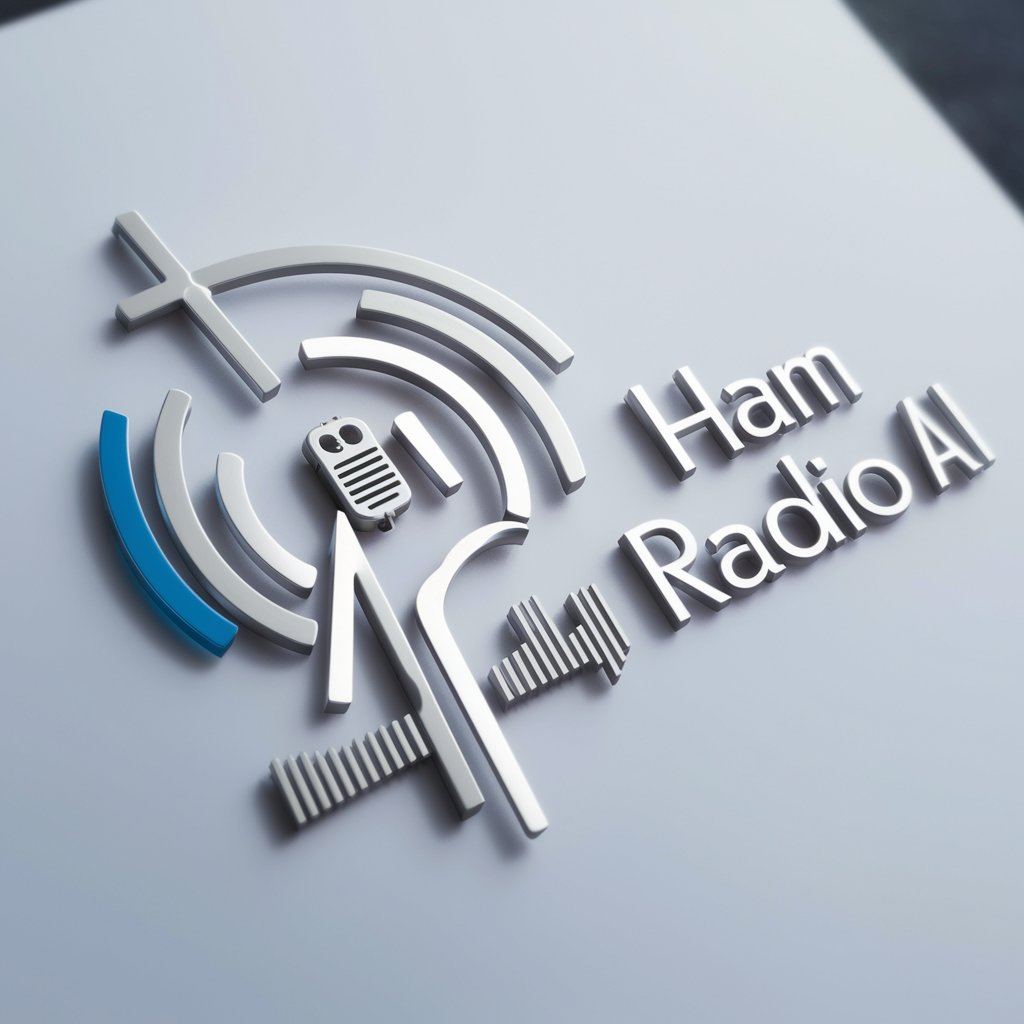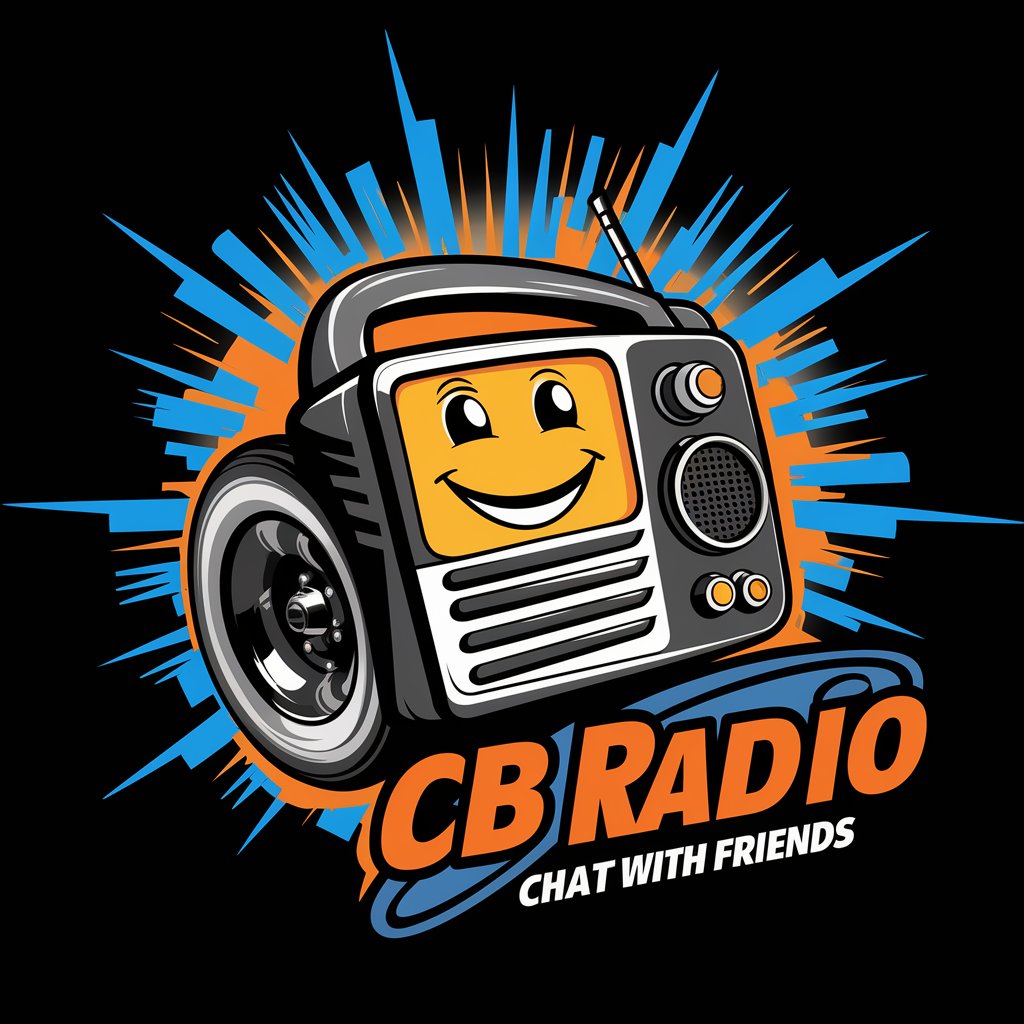HAM RADIO - Expert Ham Radio Assistance

Welcome to your ham radio expert. Let's get on the air!
Empowering Amateur Radio Communications with AI
How to choose the best portable transceiver for field operations?
What are the key benefits of using digital modes like FT8 in ham radio?
Can you explain the process of designing a multiband HF antenna?
What troubleshooting steps can I take if my antenna has high SWR?
Get Embed Code
Introduction to HAM RADIO
HAM RADIO, also known as amateur radio, is a service and hobby in which licensed participants operate communication equipment. HAM RADIO is designed with the purpose of self-education, communication, and technical investigation by amateur radio enthusiasts. Operators engage in non-commercial exchange of messages, wireless experimentation, self-training, private recreation, radiosport, contesting, and emergency communication. An example of HAM RADIO's application is during natural disasters when conventional communication services fail, amateur radio operators step in to provide crucial emergency communication services to communities and emergency response teams. Powered by ChatGPT-4o。

Main Functions of HAM RADIO
Emergency Communication
Example
In the aftermath of a hurricane, when cellular networks and landlines are down, amateur radio operators provide a critical link between the affected community and emergency services.
Scenario
Operators set up temporary communication networks to relay information about medical emergencies, resource needs, and coordination of relief efforts.
Technical Experimentation
Example
HAM RADIO enthusiasts design and build their own equipment, experimenting with digital modes, satellite communication, and radio wave propagation.
Scenario
An operator constructs a low-power (QRP) transceiver for long-distance (DX) communication, testing various antennas and digital modes to optimize signal strength and clarity over vast distances.
Educational Activities
Example
School clubs and educational organizations use amateur radio as a tool to teach students about electronics, physics, and global communication.
Scenario
A high school amateur radio club participates in a scheduled contact with the International Space Station (ISS), allowing students to learn about space, satellite communication, and engage in a Q&A with astronauts.
Community and Social Engagement
Example
Local amateur radio clubs organize field days and contests, encouraging members to operate portable stations in various locations and compete in contacting as many stations as possible.
Scenario
During a field day event, operators set up stations in parks, using solar power and portable antennas, to practice rapid deployment of communication equipment and engage in friendly competition with fellow enthusiasts.
Ideal Users of HAM RADIO Services
Emergency Responders and Disaster Relief Organizations
These groups benefit from HAM RADIO's capability to establish emergency communication networks swiftly, ensuring uninterrupted communication during disaster relief operations.
Technology Enthusiasts and Inventors
Individuals interested in wireless technology, radio wave propagation, and DIY electronics find amateur radio an invaluable platform for experimentation, innovation, and learning.
Educators and Students
HAM RADIO serves as a practical teaching tool for subjects like physics, electronics, and geography, offering hands-on experience in communication technology and global awareness.
Outdoor and Adventure Enthusiasts
For those who enjoy exploring remote areas, amateur radio provides a reliable means of communication, allowing for safety check-ins and emergency calls when out of cellular coverage.

Using HAM RADIO Guide
Step 1
Start by visiting yeschat.ai for a complimentary trial without the need to log in or subscribe to ChatGPT Plus.
Step 2
Acquire a basic understanding of amateur radio principles, including operation laws, frequencies, and etiquette, through available educational resources.
Step 3
Equip yourself with necessary ham radio gear, starting with a reliable transceiver, antenna, and power supply tailored to your specific interests, such as DXing or QRP operations.
Step 4
Practice operating the radio by tuning into different bands and modes. Participate in QSOs (conversations), nets, and radio contests to hone your skills.
Step 5
Explore digital modes and software-defined radio (SDR) for a broader range of communication possibilities and experimentation.
Try other advanced and practical GPTs
Finance Ratio Master
Empowering decisions with AI-driven financial insights

Ratio Analyst
Empowering financial insights with AI

Prime Ratio Calculator
Calculating prime ratios, powered by AI

Golden Ratio Logo Maker
Crafting Harmony in Logos with AI

Golden Ratio Real Estate Assistant
Enhance Listings with AI-Powered Visuals

Artistic Muse with Golden Ratio
Harness AI to unlock balanced, beautiful creativity.

CB Radio Chat With Friends
Connect on the Virtual Highway

Typography Genius
Empowering Design with AI-driven Typography Insights

Brand Buddy
Designing with AI, personalizing with insight.

Typography Genius
Empowering Design with AI-Driven Typography Insights

Track Finder
Uncover the Beat of Hip-Hop with AI

Commercial Property Pro
Empowering Your Property Decisions with AI

HAM RADIO Q&A
What is HAM RADIO primarily used for?
HAM RADIO, or amateur radio, is primarily used for non-commercial communication among radio enthusiasts. It serves as a hobby, a means for experimentation, education, and in times of emergency, a crucial channel for providing communications support.
Do I need a license to operate HAM RADIO?
Yes, operating a HAM RADIO requires a license. The licensing process involves passing an examination that tests your knowledge of radio theory, operation laws, and safety practices.
Can HAM RADIO be used for international communication?
Absolutely. HAM RADIO can reach global audiences. Operators can communicate internationally through various bands and modes, including Morse code (CW), voice (SSB), and digital modes (FT8, JT65).
What are the advantages of digital modes in HAM RADIO?
Digital modes offer several advantages, including better signal efficiency in weak signal conditions, lower power requirements, and the ability to automate station operations for modes like FT8, making long-distance (DX) contacts more accessible.
How can I optimize my HAM RADIO setup for portable operations?
For optimal portable operations, focus on lightweight and compact equipment. Choose a portable transceiver, a multi-band antenna that's easy to set up, and a reliable power source like a battery pack. Also, familiarize yourself with the locations and conditions under which you'll be operating.
